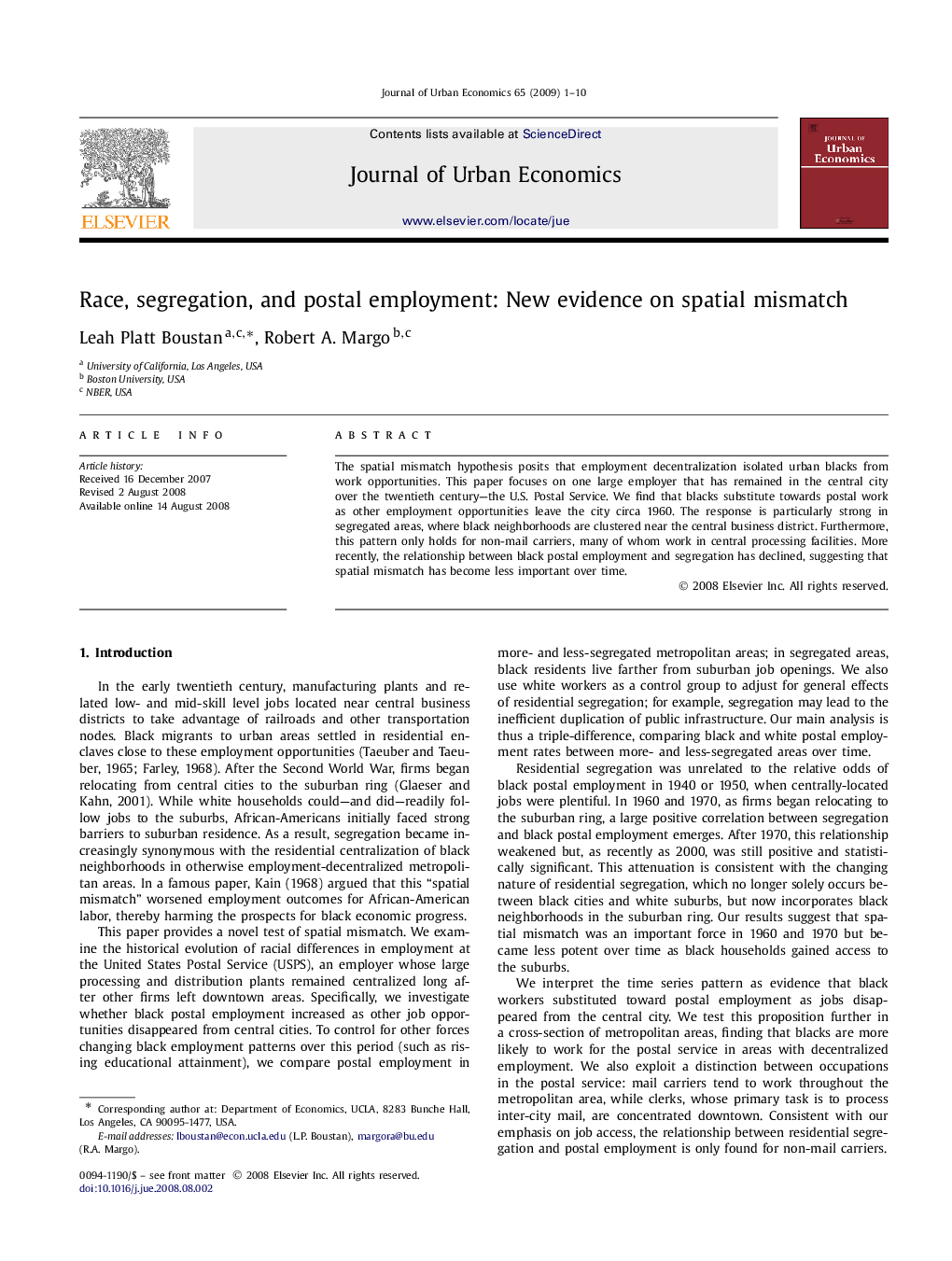| Article ID | Journal | Published Year | Pages | File Type |
|---|---|---|---|---|
| 971965 | Journal of Urban Economics | 2009 | 10 Pages |
The spatial mismatch hypothesis posits that employment decentralization isolated urban blacks from work opportunities. This paper focuses on one large employer that has remained in the central city over the twentieth century—the U.S. Postal Service. We find that blacks substitute towards postal work as other employment opportunities leave the city circa 1960. The response is particularly strong in segregated areas, where black neighborhoods are clustered near the central business district. Furthermore, this pattern only holds for non-mail carriers, many of whom work in central processing facilities. More recently, the relationship between black postal employment and segregation has declined, suggesting that spatial mismatch has become less important over time.
